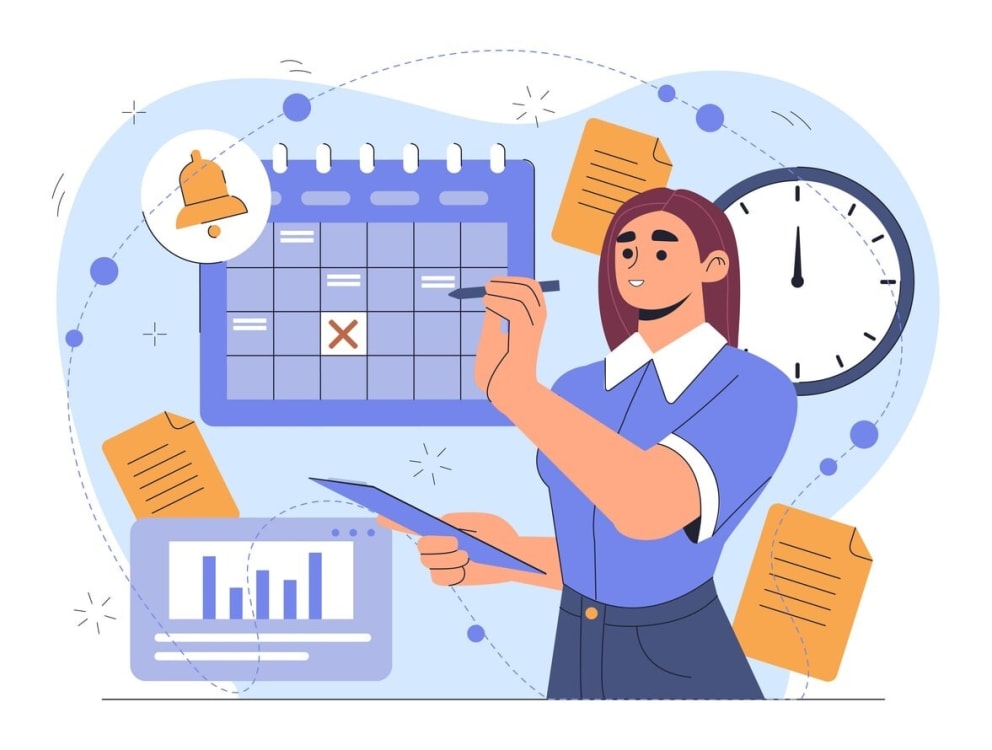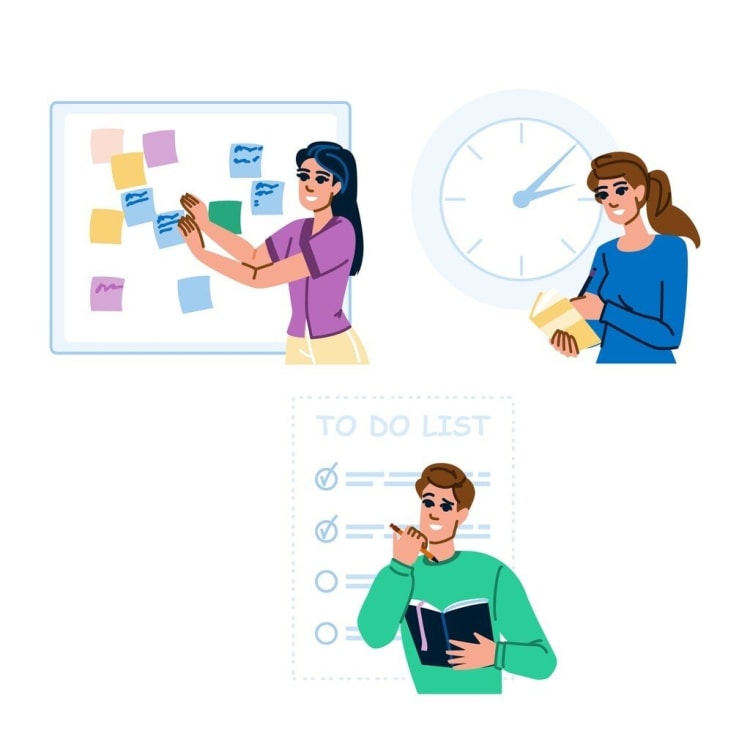Are you overwhelmed by your tasks? Prioritize tasks to focus on what matters and boost productivity. In this article, discover seven effective methods to manage and complete your most important tasks efficiently.
Key Takeaways
- Effective prioritization involves ranking tasks based on urgency and importance, enhancing productivity and time management.
- Utilizing methods like the Eisenhower Matrix and ABCDE Method aids in organizing tasks for efficient execution and focus.
- Regularly reviewing and adjusting priorities is essential for adapting to new demands and maintaining control over workload.
Understanding Task Prioritization

Effective prioritization means identifying important and urgent tasks that need immediate attention. Prioritizing tasks involves determining the order and importance based on significance, urgency, or impact. The purpose is to regain control over your to-do list and ensure that work is completed efficiently.
Effective task prioritization enhances productivity, improves time management, and boosts confidence in meeting deadlines. It involves techniques that can be learned to manage tasks more efficiently.
Mastering prioritization is key to professional growth, reducing overwhelm, and gaining control over life. It fosters a clearer focus on personal and professional goals, enhancing overall work-life balance.
Creating a Comprehensive Task List
Creating a comprehensive task list is the first step to effective prioritization. A task list offers a single view of all the tasks, aiding in their prioritization. Including monthly, weekly tasks, and daily goals provides a task-based holistic view of responsibilities, alongside other task management strategies.
A comprehensive task list should encompass work projects, personal tasks, and long-term goals, ensuring no significant areas are overlooked. Effective planning involves creating to-do lists, schedules, and breaking down larger projects into manageable parts.
Assigning due dates to tasks helps manage time and understand responsibilities better. Each morning, creating a prioritized task list organizes daily tasks for effective execution, ensuring a focused start to the day.
Organizing tasks in this way helps manage workload and avoid feeling overwhelmed. This method also allows tracking progress and making necessary adjustments, ensuring priorities are maintained
Assessing Urgency and Importance

Effective prioritization involves ranking tasks by their urgency and significance, including their priority level and priority number. Urgent tasks require immediate action and have clear consequences if not completed promptly. Including deadlines and urgency levels in your task list enhances the ability to prioritize tasks effectively and manage priority levels. Time-sensitive tasks can also be included to ensure all aspects are considered.
The Eisenhower Matrix categorizes tasks into quadrants based on urgency and importance, aiding effective prioritization. This technique involves distributing tasks across a four-quadrant matrix, helping determine task importance. Important tasks, although not immediately urgent, significantly contribute to long-term goals. The urgent important matrix serves as a valuable tool in this process.
Addressing significant tasks first enhances motivation and clarity for the day, reducing stress levels. Color-coding tasks based on priority can streamline prioritization, making it easier to focus on what matters most.
Applying Task Prioritization Methods
Task prioritization techniques organize tasks based on factors like importance, effort, and deadlines. Methods include the Eisenhower Matrix, ABCDE Method, and the prioritization method priority matrix. Regularly evaluating your strategies ensures continual improvement and efficiency.
To enhance efficiency in managing your to-do list:
- Eliminate unnecessary tasks before prioritizing.
- Assign priority numbers to tasks, especially when all your tasks are urgent and important.
- Identify high-value and urgent tasks first to maximize productivity. This will help create a priority list that focuses on your highest priority tasks and what matters most.
Eisenhower Matrix
The Eisenhower Matrix categorizes tasks into four groups based on urgency and importance, enhancing task management. Developed by Dwight D. Eisenhower, it uses Importance (X-axis) and Urgency (Y-axis) to classify tasks.
Top priorities in the Eisenhower Matrix are:
- Important and urgent tasks.
- Urgent but not important tasks should ideally be assigned to others, allowing focus on more significant responsibilities.
- Important but not urgent tasks are categorized as lower priorities for later.
Tasks that are neither urgent nor important are likely unnecessary distractions. Limiting the number of d tasks in each quadrant to ten helps maintain focus and clarity.
ABCDE Method
The ABCDE method ranks tasks from A (most important) to E (least important), aiding clarity in task management. Each task is assigned a letter value based on its importance:
- A: Highest priority
- B: Second highest priority
- C: Moderate priority
- D: Low priority
- E: Lowest priority
To implement the ABCDE method, write down tasks, assign letters A to E based on priority, and complete A tasks first. Combining this method with techniques like ‘eating the frog’ ensures focus on high-priority tasks first.
Most Important Task (MIT) Method
Most Important Tasks (MITs) are key tasks prioritized for achieving significant long-term goals. The MIT method emphasizes selecting at least one MIT each day that significantly influences long-term objectives.
Selecting 1-3 key tasks daily narrows focus and improves efficiency towards achieving larger objectives. To implement the MIT method, consider focusing on just one task for the day, allowing concentrated effort on what matters most.
A traditional to-do list is not necessary to effectively use the MIT method, simplifying the task management process.
Scheduling High Priority Tasks

Plan your most significant tasks for times when you have the highest energy. High-effort tasks should be addressed first to maximize peak productivity times. Work on high-focus tasks when you feel most awake and energized.
Creating a daily agenda that accurately represents priority tasks enhances overall work performance. Maintaining a schedule is essential for staying on track. Ensure time is allocated for tasks by adding them to your calendar.
Building flexibility into your schedule allows handling unexpected tasks and minimizes less stress. Allow for breaks or task-switching to prevent burnout. Using tools that automate task reminders helps keep you aware of deadlines and meet deadlines better.
I'm a rich text field. I support bold, italic, underline, links, and other formatted content.
Utilizing Project Management Software
Project management software serves as a centralized platform for:
- Task organization
- Prioritization
- Deadline management
- Collaboration
- Resource allocation
- Progress tracking
- Adaptability
- Task management software
Tools such as Kumospace and Teamwork.com help prioritize tasks and manage workload effectively, maximizing team productivity.
Gantt charts and kanban boards in project management software provide visual representations of tasks and timelines, aiding in understanding task progression. Integrating various productivity apps into a project management tool enhances overall workflow and task visibility.
Automated workflow features in project management software can significantly reduce manual task management efforts, allowing more focus on an efficient workflow for high-priority tasks.
Managing Complex Tasks

Strategies for effective task management include:
- Breaking down larger tasks into smaller subtasks to reduce feeling overwhelmed.
- Addressing the most demanding tasks early in the day to improve productivity.
- Clearly estimating the time and resources needed for tasks to aid in effective prioritization.
Key points for improving focus and managing tasks include:
- Concentrating on individual tasks without distractions can significantly boost focus.
- The ‘eat the frog’ strategy suggests prioritizing challenging tasks to minimize procrastination.
- When faced with a daunting task, postponing or dropping it can alleviate mental blocks.
- Recognizing personal limitations regarding task completion is crucial for maintaining mental well-being.
Regularly Reviewing and Adjusting Priorities
Regularly reviewing priorities is essential to accommodate changing circumstances and ensure focus on what matters most. Adjust priorities when unexpected urgent tasks arise or deadlines shift, causing a change in task importance. It is important to regularly review these priorities to maintain clarity and direction.
Regularly reviewing and adjusting priorities helps adapt to new demands and remain effective. Poor prioritization strategies can lead to feelings of being overwhelmed and out of control, making it crucial to focus on new priorities requiring immediate attention.
Avoiding Common Pitfalls in Task Prioritization
A frequent mistake is failing to prioritize effectively, leading to overwhelmed to-do lists without focus. Underestimating task duration can lead to frustration, so it’s wise to double your time estimates. Procrastination hinders task completion; breaking too many tasks into smaller parts makes starting easier.
Inability to manage distractions is a common issue; silencing phone notifications helps maintain focus. Frequently saying ‘yes’ to new tasks can overwhelm you; know your limits and say ‘no’ when necessary.
Focusing on important tasks first helps you stay focused and avoid the pitfalls of procrastination, especially when tackling the most urgent tasks.
Enhancing Work-Life Balance Through Effective Prioritization

A clear scrum prioritization process:
- Reduces stress and enhances overall productivity.
- Allows for appropriate time allocation to tasks, ensuring quality and accuracy.
- Incorporates at least one Most Important Task (MIT) each day to aid in reaching long-term goals.
Effective task prioritization transforms daily chaos into a manageable workflow. Achieving work-life balance and reducing stress is a crucial benefit of learning how to effectively prioritize tasks. As personal values evolve, regular assessment of priorities ensures goals remain relevant and meaningful.
Flexibility gained through regular adjustments fosters:
- Resilience and readiness to adapt to new opportunities.
- Alignment of long-term plans with current realities and changing circumstances through regular reviews.
- Better resource allocation by periodically evaluating priorities, avoiding wasted effort on obsolete tasks and identifying the resources required.
Not taking breaks can reduce productivity; short breaks recharge and maintain decision-making quality. Understanding the purpose of tasks increases focus and motivation to complete them.
Summary
In summary, prioritizing tasks effectively is a vital skill that can significantly boost productivity and reduce stress. By creating a comprehensive task list, assessing urgency and importance, and applying proven prioritization methods like the Eisenhower Matrix, ABCDE Method, and MIT method, you can take control of your workload. Scheduling high-priority tasks during peak productivity times and utilizing project management software further enhance efficiency.
Regularly reviewing and adjusting your priorities ensures you remain adaptable to changing circumstances. Avoiding common pitfalls and focusing on high-value tasks helps maintain a balanced and productive work life. By incorporating these strategies, you can achieve a harmonious work-life balance and reach your long-term goals.
The Eisenhower Matrix is a powerful prioritization tool that divides tasks into four quadrants based on urgency and importance, enabling you to focus on what truly matters. This method enhances your efficiency and decision-making in task management.
The ABCDE method categorizes tasks by importance, with 'A' representing the highest priority and 'E' the lowest. This systematic approach ensures you focus on completing your most crucial tasks first.
MITs are the 1-3 key tasks you prioritize daily that have a significant impact on your long-term goals, enhancing your focus and efficiency. Focusing on these tasks can lead to more effective time management and productivity.
Scheduling high-priority tasks during peak productivity times is essential because it maximizes your efficiency and allows you to focus on critical work when your energy levels are highest. This approach ensures that important tasks receive the necessary attention for successful completion.
Project management software like Kumospace enhances task prioritization by centralizing organization and deadlines, offering visual timelines, and integrating productivity tools to streamline workflow. This ensures you can focus on high-priority tasks effectively.





